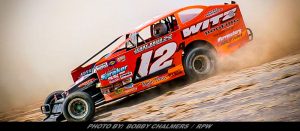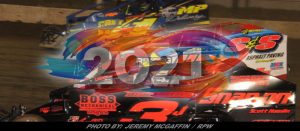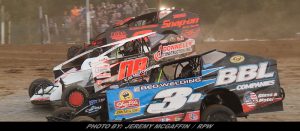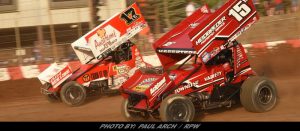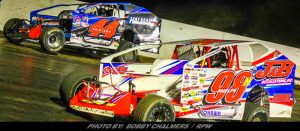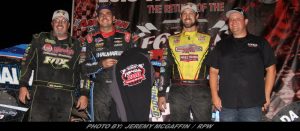NASCAR Could Benefit From Going Electric
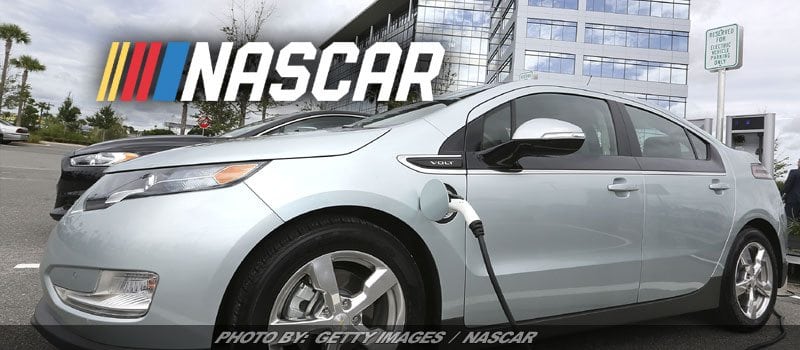

Column By: NICK GRAZIANO / RPW – CLAY, NY – NASCAR should go electric. Not the Cup Series…at least not yet.
The number of people watching the races on television has decline, and the people attending the races has dramatically decline over the past few years.
The three publicly-traded companies that operate all but two of the 23 tracks on the Cup Series schedule reported a decline in admission revenue from 2010 to 2015, according to SBNation.com. Dover Motorsports Inc. suffered a 51 percent decline, Speedway Motorsports Inc. a 28 percent decline and International Speedway Corp. saw a 19 percent decline.
The sport needs a boost, and I’m sorry, but the half-naked Monster Energy girls in victory lane are not the solution.
When you look at what is actually “hot” in the automotive industry at the moment, it is hybrid and electric cars. For those not in tune with the latest and greatest in the industry, when you hear “hybrid” and “electric” you probably think of a Toyota Prius or Nissan Leaf. That is not what I’m talking about.
Supercar companies such as Ferrari, Porsche and McLaren have utilized electric technology to create the trinity of elite supercars – the Ferrari LaFerrari, Porsche 918 and McLaren P1…all three have a hybrid system which produces near or more than 1,000hp.
The cars have an internal combustion engine (ICE) and electric motors. The two motors work together in harmony to provide a maximum source of power and acceleration. The electric motors fill any gaps the ICE may leave.
For example, when a driver lets off the gas going into a corner and then gets back on it coming out, there is a slight hesitation from the ICE as it takes a second for it to begin burning fuel again. While the ICE has to hesitate the input from the electric motors is instant, filling that second of a gap, and in racing seconds, even thousandths mean everything.
That is the benefit electric motors have over every other engine. Torque build up from an electric motor is instant, allowing for staggering acceleration that never lets up as long as you keep the throttle to the floor.
In February, Motor Trend clocked the 2017 Telsa Model S P100D – producing about 680hp – having a 0 to 60mph time of 2.28 seconds – as the fastest 0-to-60 time they have has ever recorded. In comparison, the Dodge Challenger SRT Hellcat, which weighs 400lbs lighter than the Telsa and is powered by a 707hp super-charged V8, has a 0-to-60mph time of about 3.6 seconds.
The Tesla Model S P100D will also run a quarter mile in 10.5 seconds, while the Hellcat is listed as running a quarter mile in just over 11 seconds.
Aside from power, electric cars are more efficient and help to reduce carbon emissions. Despite if you care about any of that, many automotive manufactures do. Ford, Chevrolet, Nissan, Volkswagen and BMW are just a few companies who have already released all-electric cars. Many more like Mercedes, Jaguar and McLaren have all-electric cars in development, set to go on sale in the coming years.
There are even new companies like Lucid Motors and Faraday Future who are solely developing electric cars, looking to dethrone Tesla.
It would be wise for NASCAR to join the club in some fashion. The still young Formula E series – the all-electric international open-wheel racing series – has been thriving ever since its inaugural race in 2014. It attracts new racing venues every year, helping to increase its fan base. Sponsors, manufactures and international companies are flocking to the series as it provides a perfect venue to get the word out about their electric products to the people who would be interested in them.
There are about six automotive manufactures currently involved in the sport, and more are looking to join.
All of the electric motors are the same, so there is no worry that one team may have a better engine than the other. This creates close, intense racing as drivers must solely rely on the handling on their car, and their own talent.
The biggest issue with the series is the electric range of the motors and the lack on sound they create. The motors only last about half the race, and instead of waiting to recharge to motors, drivers get out of their car and into another one. But that problem will be fixed next season as McLaren has developed a more power battery, which will last the entire race and create more power.
The lack of sound created by an electric motor is an acquired taste. While racing, the Formula E cars do give off a science fiction “Tron” like sound, but there is no thunderous roar or Earth-shaking vibrations you would get from an ICE. To some, that roar may be all they need from a race, but the quieter racing may appeal more to some, especially those looking to bring their young child to an event.
Introducing another second-tier division series featuring all-electric cars could be the boost NASCAR needs. It could attract many new manufactures, sponsors and fans who may have never considered watching or being a part of the sport.
Even starting off small, by introducing hybrid technology in some fashion, could be a way to ease fans into the idea. If it works, a little bit of electricity could be the spark that fills the grandstands every weekend again.


